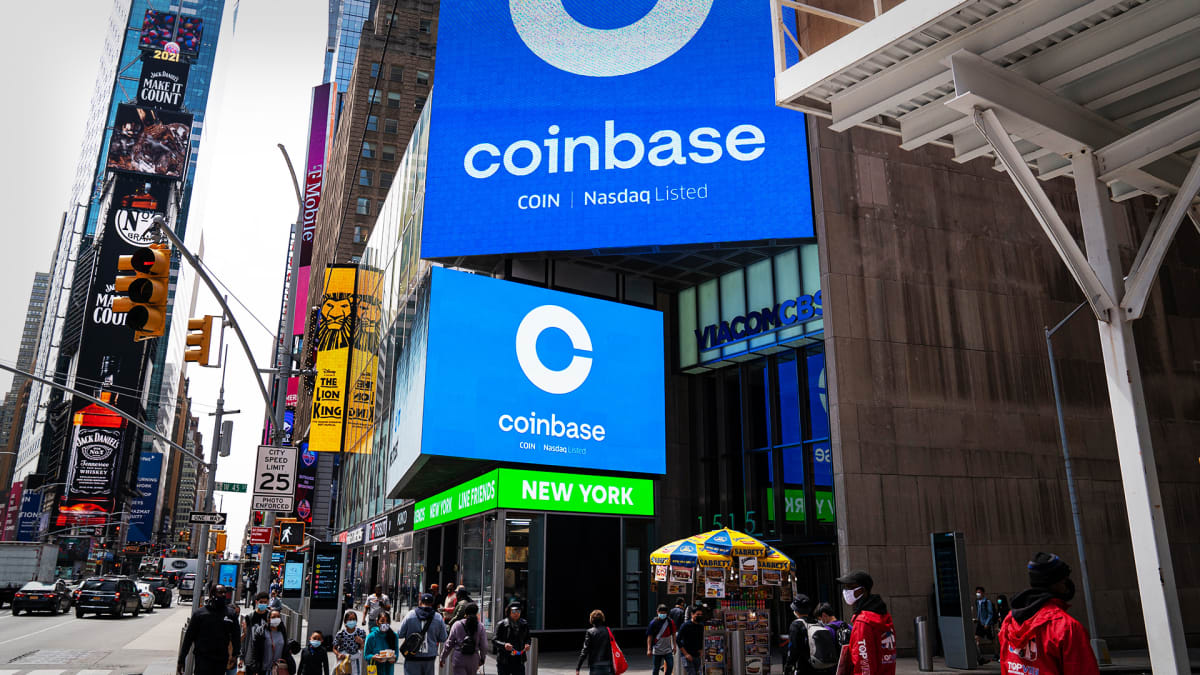TheStreet
An investigation by the New York State Department of Financial Services found actions by Coinbase left it vulnerable to criminal conduct.
A disastrous year for cryptocurrencies culminated in the infamous November 2022 collapse of the now-bankrupt FTX exchange.
The rapid fall of FTX had devastating effects on the entire crypto-asset sector and led to several other bankruptcies.
Sam Bankman-Fried, the former FTX CEO, after a series of revelations and legal actions, ended up pleading not guilty to fraud and other charges on Jan. 3.
Three federal agencies (the Board of Governors of the Federal Reserve System, the Federal Deposit Insurance Corporation and the Office of the Comptroller of the Currency) even issued a joint official statement warning banks of crypto risks, also on Jan. 3.
Cryptocurrencies, in general, had already been tainted by speculation they are often used by criminals for illegal purposes such as money laundering, fraud, and human and narcotics trafficking.
A European Central Bank blog post suggested in November that Bitcoin (~BTCUSD) was a currency for nefarious activities.
“Bitcoin’s conceptual design and technological shortcomings make it questionable as a means of payment: real bitcoin transactions are cumbersome, slow and expensive. Bitcoin has never been used to any significant extent for legal real-world transactions,” the blog post said.
Coinbase Settles with New York Regulators
Related to charges of corrupt uses of cryptocurrency, U.S. exchange Coinbase Global (COIN) – Get Free Report has been under investigation by the New York State Department of Financial Services and settled on Jan. 4 for $100 million.
Half of that amount is a fine, and the other $50 million will be used by Coinbase to improve its compliance practices.
Adrienne A. Harris, Financial Services superintendent, announced the settlement in a press release, saying failures in Coinbase’s compliance program violated New York laws and regulations.
The department says failures made the Coinbase platform vulnerable to serious criminal conduct. This includes fraud, money laundering, suspected child sexual abuse material activity, and potential narcotics trafficking, according to the press release.
“It is critical that all financial institutions safeguard their systems from bad actors, and the Department’s expectations with respect to consumer protection, cybersecurity, and anti-money laundering programs are just as stringent for cryptocurrency companies as they are for traditional financial services institutions,” Harris said.
“Coinbase failed to build and maintain a functional compliance program that could keep pace with its growth,” she continued. “That failure exposed the Coinbase platform to potential criminal activity requiring the Department to take immediate action including the installation of an Independent Monitor.”
Risks Federal Agencies see for Banks
The Jan. 3 statement issued by the Fed, FDIC and OCC warning banks of risks had noted the difficulties the crypto-sector has experienced. Several key risks associated with crypto-assets are listed in the statement.
These dangers, it said, were demonstrated by volatility and vulnerabilities during 2022. Following is the list of risks bulleted out in the statement:
Risk of fraud and scams among crypto-asset sector participants.Legal uncertainties related to custody practices, redemptions, and ownership rights, some of which are currently the subject of legal processes and proceedings.Inaccurate or misleading representations and disclosures by crypto-asset companies, including misrepresentations regarding federal deposit insurance, and other practices that may be unfair, deceptive, or abusive, contributing to significant harm to retail and institutional investors, customers, and counterparties.Significant volatility in crypto-asset markets, the effects of which include potential impacts on deposit flows associated with crypto-asset companies.Susceptibility of stablecoins to run risk, creating potential deposit outflows for banking organizations that hold stablecoin reserves.Contagion risk within the crypto-assetsector resulting from interconnections among certain crypto-asset participants, including through opaque lending, investing, funding, service, and operational arrangements. These interconnections may also present concentration risks for banking organizations with exposures to the crypto-asset sector.Risk management and governance practices in the crypto-asset sector exhibiting a lack of maturity and robustness.Heightened risks associated with open, public, and/or decentralized networks, or similarsystems, including, but not limited to, the lack of governance mechanisms establishing oversight of the system; the absence of contracts or standards to clearly establish roles, responsibilities, and liabilities; and vulnerabilities related to cyber-attacks, outages, lost or trapped assets, and illicit finance.
Author Profile
Latest entries
 ScienceApril 28, 2024Early trauma cuts squirrel lifespans
ScienceApril 28, 2024Early trauma cuts squirrel lifespans HeadlinesApril 28, 2024NBA legend Charles Oakley instructs Knicks 'to do something' about Joel Embiid's on-court antics
HeadlinesApril 28, 2024NBA legend Charles Oakley instructs Knicks 'to do something' about Joel Embiid's on-court antics HeadlinesApril 28, 2024'Westernization is not the answer': Artist Àsìkò explores Yoruba culture through mythology
HeadlinesApril 28, 2024'Westernization is not the answer': Artist Àsìkò explores Yoruba culture through mythology ScienceApril 27, 2024Alzheimer’s moves faster in people with Down syndrome
ScienceApril 27, 2024Alzheimer’s moves faster in people with Down syndrome

